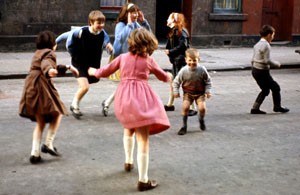
Well, what I mean is that there is a problem with happiness as a measure of whether limited planetary resources should be used. I talk about this a lot, right?
I talk a lot about how if we only choose to use the resources that actually make people happy and cut out the things that don’t, we’ll be on our way to saving our habitat (see here and here, for example). I also say that if we design our systems and products carefully, we can both make them better for our habitat and for our happiness.
This is important because we so often associate environmentalism with deprivation, which is a hard sell. But if we can find smart methods to associate abundant happiness or quality of life with environmentalism, then we’re in a win/win situation.
But again, the problem is, who decides what makes us happy? Who decides the meaning of high quality of life? What, in other words, is the metric?
This is a big question. Too big for a blog post.
But there is one man who came up with a metric that, at least in the case of city planning, seems to work. That man is Enrique Peñalosa, former mayor of Bogota, Columbia (read about him here and here and watch a video about him here).
Putting into practice his emphasis on happiness, according to StreetFilms:
Peñalosa changed the way Bogota treated its non-driving citizens by restricting automobile use and instituting a bus rapid transit system which now carries a 1/2 million residents daily. Among other improvements: he widened and rebuilt sidewalks, created grand public spaces, and implemented over one hundred miles of bicycle paths.
According to an article in EnRoute:
“The shift in priorities had a psychological effect on the city. Polls found that optimism shot up. The murder rate fell by 40 percent. By the end of Peñalosa’s term, residents had voted to ban private cars from rush hour by 2015.”
But that still leaves us with the same question. What is the measurable metric by which Peñalosa or any other policy-maker can decide if true happiness is achieved?
Well, here is one metric, told to me by a colleague at Transportation Alternatives today. It can be measured, it can be verified, and by most human standards, it could be used at least as a proxy for happiness. Peñalosa, when trying to figure out if his policies were working, at least as the story was told to me, measured one thing:
The number of children playing in the streets.
If that is not a measure of societal happiness, if that is not one worthwhile metric, I don’t know what is.